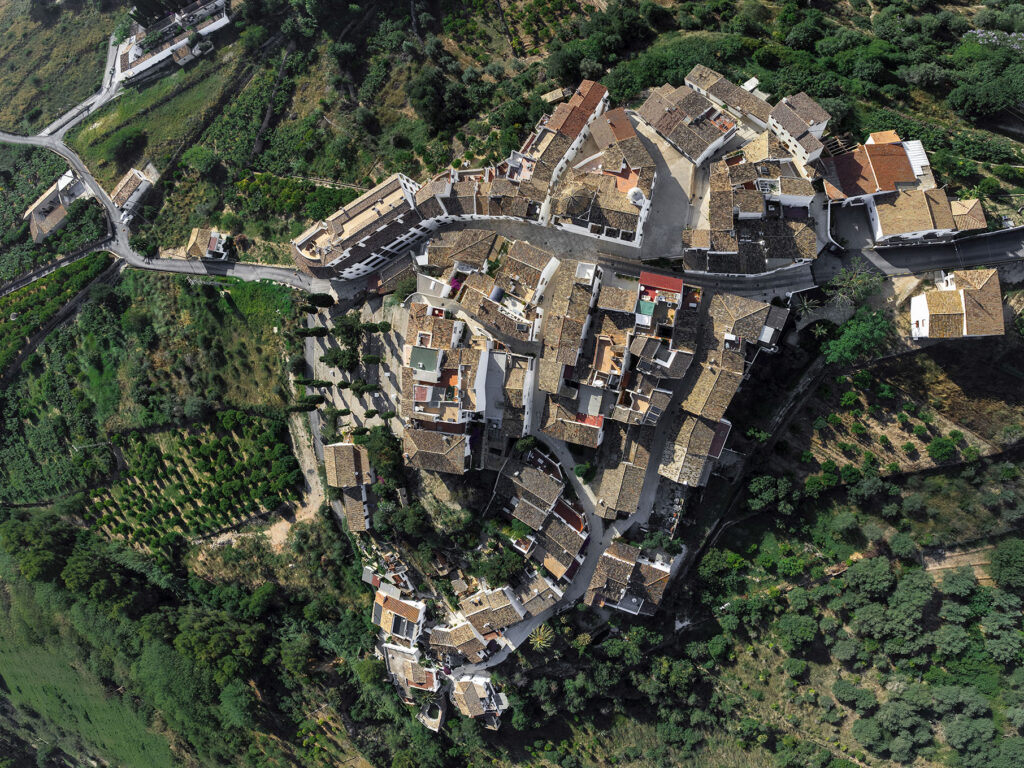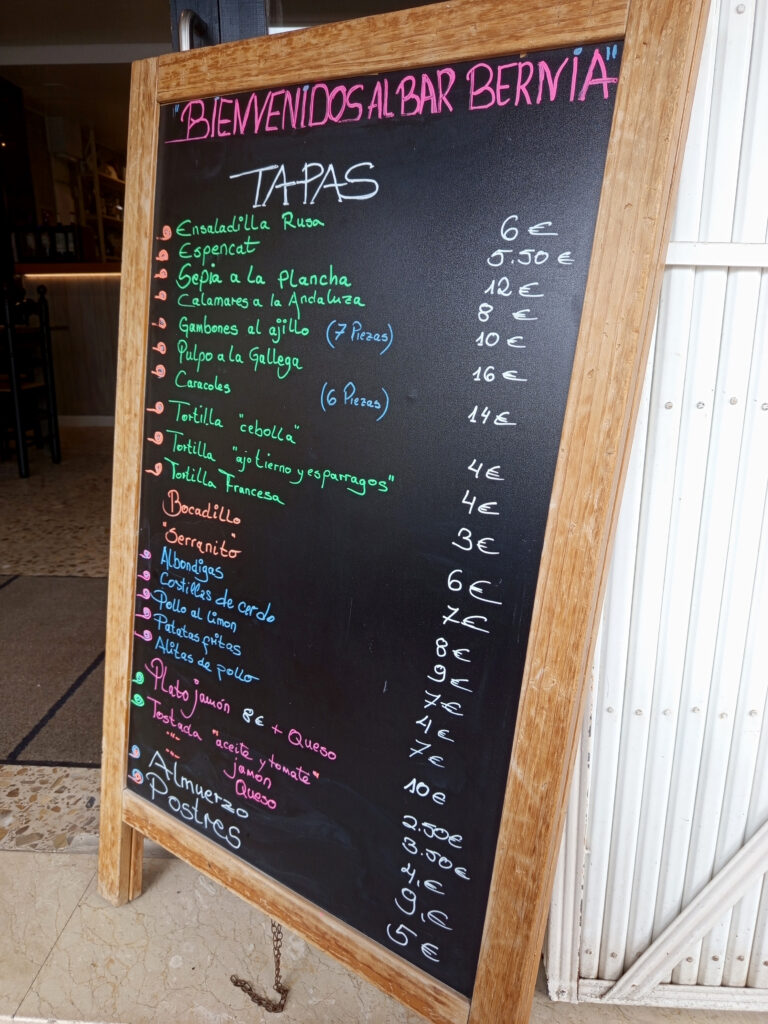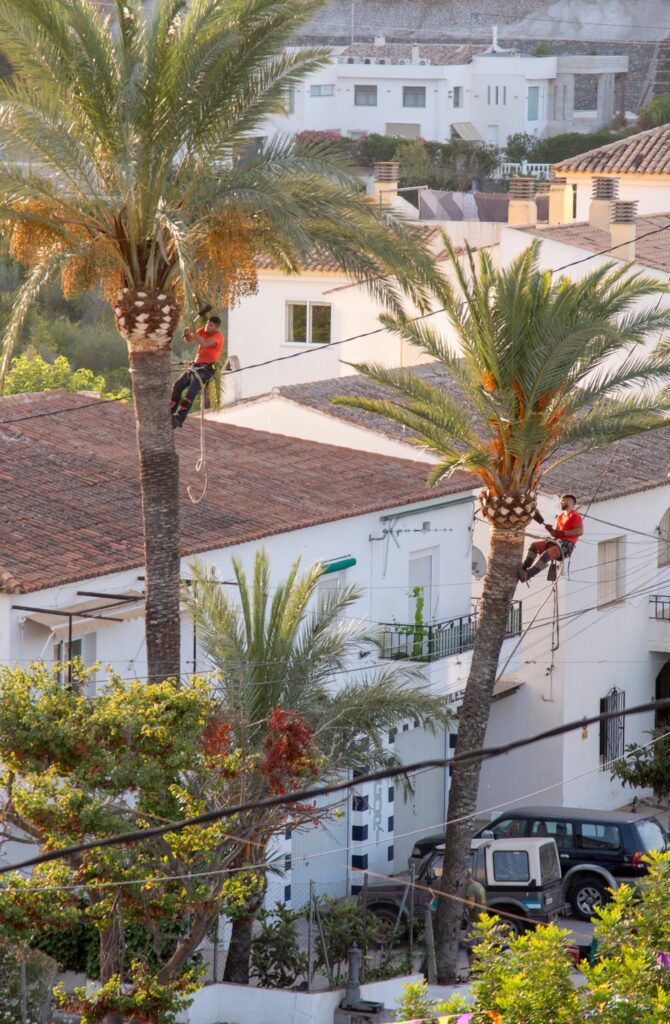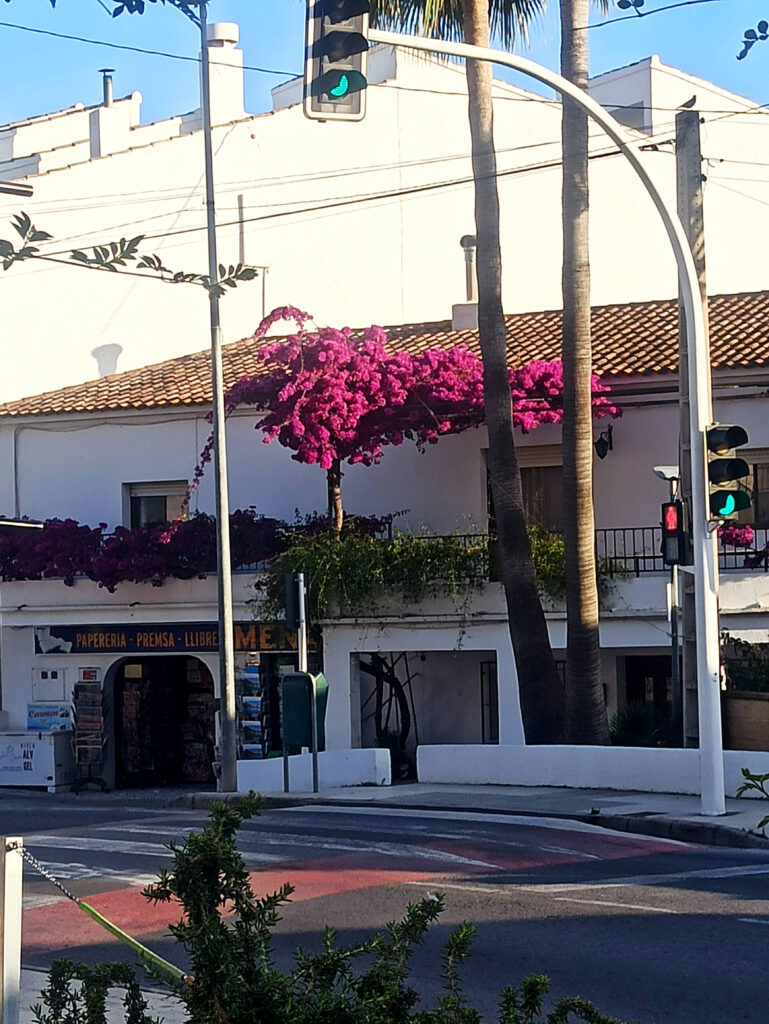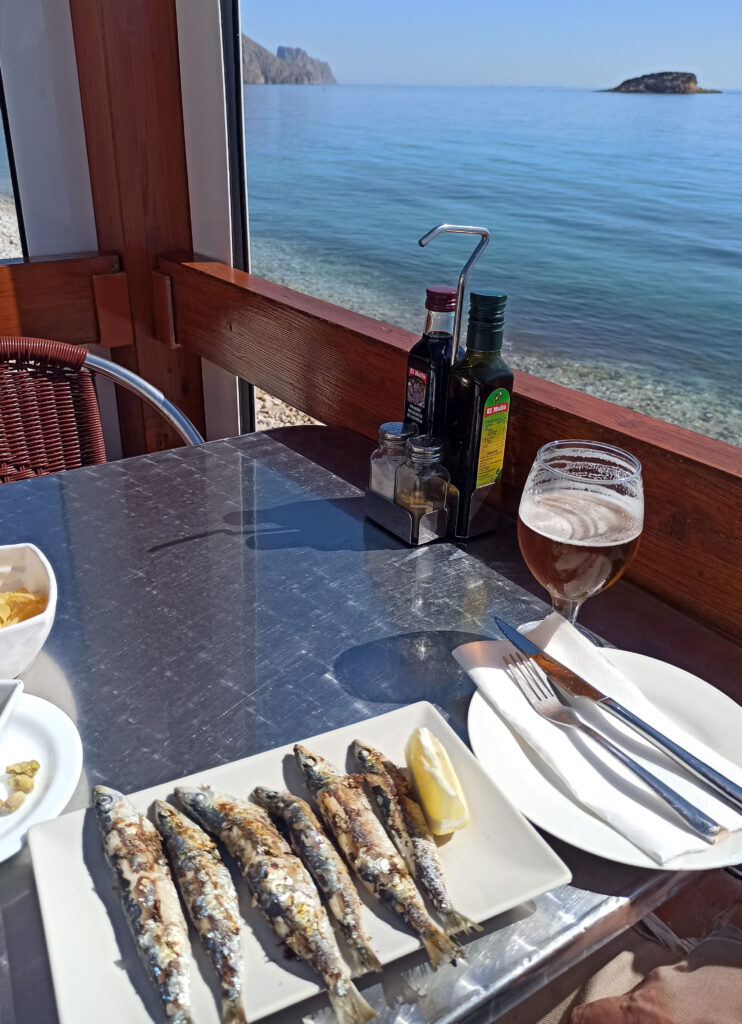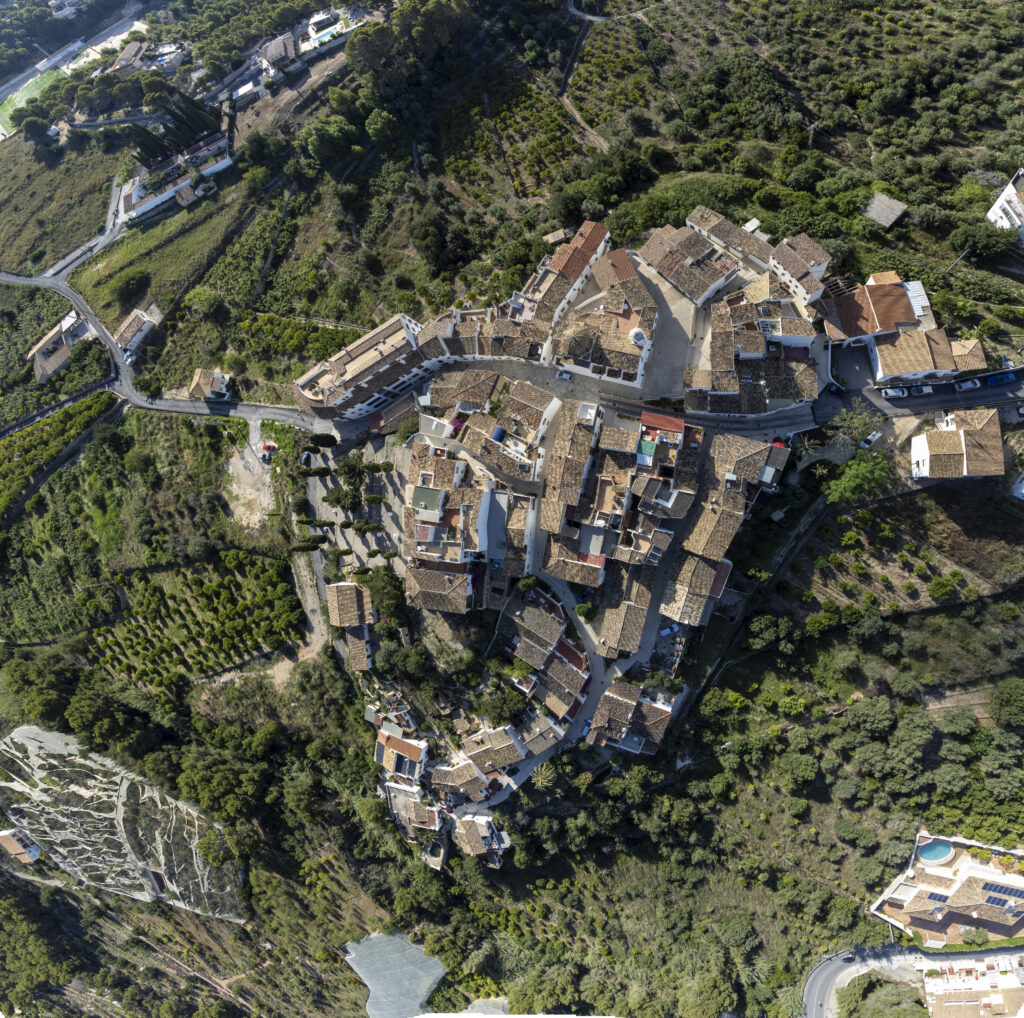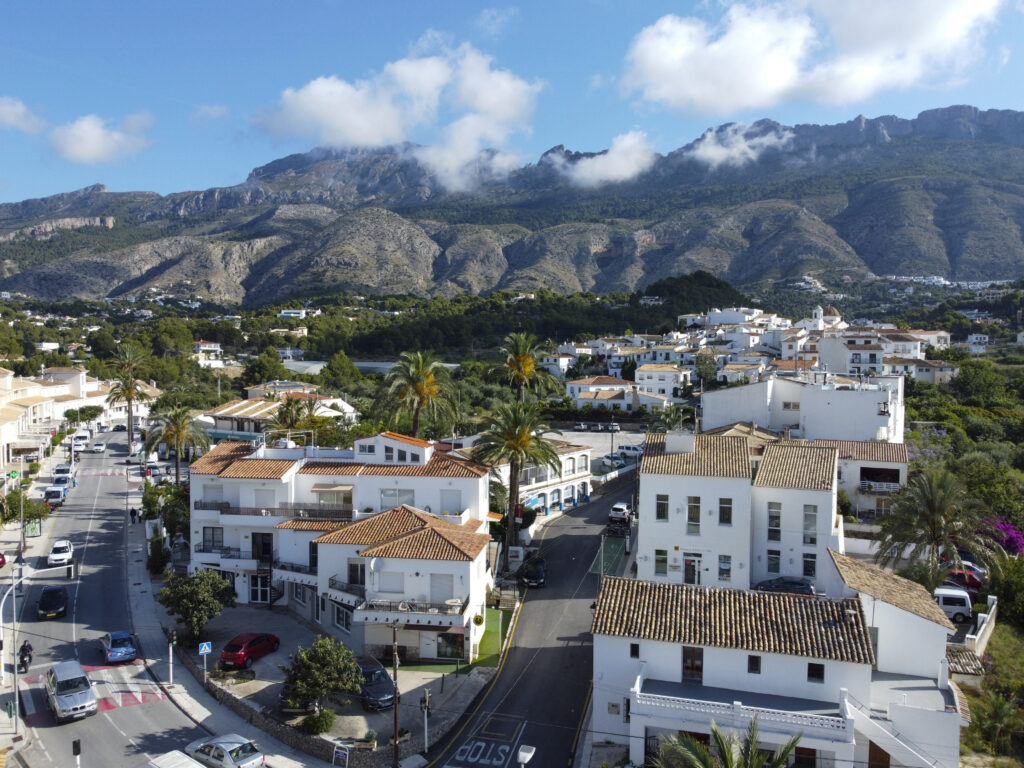Altea la Vella
It is a district of the municipality of Altea. It has 583 inhabitants, 2334 inhabitants altogether counting on the urbanizations that surround to him.
Jaume Antoni Martínez García in his history of Altea la Vella, tells us that the population center that we know by the name of Altea la Vella, had its own entity from the Middle Ages until the 16th century. Previously, the presence of population in the territory between the Algar river and the Serra Bèrnia enjoyed important habitats, but also suffered from intermittency, population displacement and even demographic gaps.
Evidence has been found of an Iberian settlement dating to the 6th and 5th centuries BC with a necropolis on the way to the mountain range.
There are some rural settlements from Romanization time.
During the Muslim period the most important settlement center was the Altāya farmhouse, which under Christian rule changed its name to “Altea”. Part of the ancient territory of the Taifa of Dénia (including Altāya – Altea) came under the control of al-Azraq who was the one who submitted to the vassalage of James I.
With the Christian conquest, the Altāya place-name becomes “Altea”, a name given to the village or village that was there, at that time in the current village of Altea la Vella. The importance of Altea is such that it receives a Puebla Letter from Peter III “The Great” in 1279.
Later, its importance would decline until it was deserted and in ruins, but this situation did not occur before the sixteenth century.
Its feudal lord, Roger de Llúria, receives in 1317 a license to be able to embark or disembark merchandise in beaches or loaders located in its fiefdoms, among which is Altea, being the beach of the Olla where a port or anchor.
The Llibre del Repartiment collects land donations in the Altea of the time to Bernat de Espígol and thirty-nine of his companions. These forty Christians would be a small knight and war pawn, almogáveros who would have to defend and control the territory, avoiding the insurrections.
In 1524 there are only 8 inhabitants, all of them Muslims and in 1527 Altea is uninhabited. The houses of Altea were left uninhabited, the streets deserted and the lands uncultivated. A few years later, other people flocked to the other side of the river, farther south. The landlord gave them “ all kinds of facilities ” so that their land would benefit them, and they built a new village on the rubble of another old one. But for the name of the town he preferred to use the name of the leftmost village, at the foot of the Sierra Bernia, he called it “Altea”. The land on either side was divided among the new inhabitants, who came across a dilapidated village, the old Altea. This village, the village of the houses, was called Altea la Vella.

